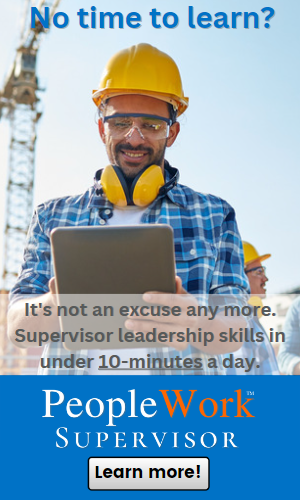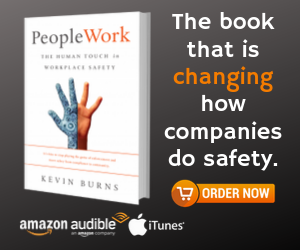The 3-Step Plan for A Successful Safety Stand-down
Since the onslaught of COVID-19, safety meetings have changed. Well, we hope they have. Most organizations have been connecting with their distanced employees through electronic means. And that includes safety meetings.

Most safety professionals would freely admit that safety meetings were done badly before COVID. Taking a bad meeting and putting it online is not the answer.
Gone are the days of assembling your people into a meeting hall, sitting in close proximity for hours, and then having a big barbeque buffet for lunch. If we’ve learned nothing from COVID, then we need to learn that we must do our own in-house safety protocols better. And our safety meetings.
Re-think your stand-down.
In speaking with fleet safety professionals, many have outfitted their fleet truck cabs with tablets. Now, instead of exiting the truck and heading inside a building for safety meetings, drivers huddle together over video conference. The safety people I have spoken with report that not having co-workers looking at each other in-person has actually raised engagement levels in the safety meetings.
Your old in-person safety stand-down format is not going to cut it anymore. Zoom-fatigue is a real thing. Your people just are not willing to sit in front of a computer screen for a half-day or full day to attend a safety stand-down by video.
So, it’s time to dump the endless chart-and-graph PowerPoint slides, the number crunching, and finding presenters willing to help you fill blocks of time in your agenda. Your next safety stand-down needs to be faster and punchier.
Here is a 3-step plan to organizing a more successful safety stand-down.
Step 1: Make your core message clear and concise.
Your old stand-downs may have run up to a full day. Now, you have about an hour. So, you’ve got to make the most of your short time with full attention. That means getting to the point.
Developing your core message and takeaway requires plenty of planning and thought. You need a team to brainstorm your message. So, assemble your best safety and supervisory minds around a virtual boardroom table and get to work. Identify the answers to these questions:
- What is the one key takeaway that we want all of our people to take into the field, regardless of their job function?
- What do we want our people to do that they are not doing now?
- What is the outcome we would like to see more of?
- What specifically do we want them to do when they leave the stand-down?
- How do we want them to support their fellow employees in safety?
Get very clear on what exactly you want your people to do at the end of the meeting. Boil that instruction down into a core phrase that is 7 or fewer words. Fewer is better.
Step 2: Get supervisors to support the stand-down core message.
Simply put, employees do what their supervisors do. We figure out what is important to our bosses and then we do what they deem important. So, you can see how crucial it is that supervisors understand and buy-in to your new stand-down core message (developed in Step 1).
Ideally, you assemble your supervisors prior to the stand-down to roll-out the message to them first. This could even happen a few hours before the stand-down. Supervisors must willingly support the core message in the field. Helping supervisors to feel like an integral part of the organization’s safety success will go a long way into getting buy-in to what you’re trying to accomplish at the stand-down.
No one position has more influence over the day-to-day activities of the front-line employee than that of the front-line supervisor. You cannot skip this step and expect that your core message will sustain in the field. Supervisors need to buy-in to the messaging and more importantly need to understand their role in supporting the safety message and safety program. Make the time to include supervisors as a part of the solution.
Step 3: Create a follow-up strategy.
Having supervisors support the safety stand-down messaging is only part of the overall follow-up strategy. A stand-down that is going to sustain is not going to be a one-and-done effort. There needs to be a plan to reinforce the message from all levels of the organization over a period of at least nine or ten months.
There is a reason that the core message in Step 1 is in 7 words or less. You need to be able to remind your people of the core message in a way that doesn’t seem like a long, drawn-out word salad that isn’t terribly specific. Get to the core first and then be willing to do the work to repeat that core message as often as possible and in as many ways as possible.
So, how will you expose your employees to the core message of safety over the next year? What reminders and visual triggers will you use? How will you incorporate that core message into toolbox and tailgate meetings? Can senior managers reference the core message in their communications?
Follow-up, follow-up, follow-up. Do not miss this point or your safety communications will end up being viewed as a “flavor of the week.” Create a plan to win over your people over the next year. Besides, it’s what you do after the stand-down that really matters anyway.
Bonus Step: Get some help.
None of these three steps are easy alone, admittedly. The work is hard, but the reward is worth it. To reduce the work involved, get some outside help. The RYT Program (Rally Your Team) was designed specifically to take you through Step 1 and Step 3. If you’re interested in how it works and how it can help you build better safety communications, click here.
As for Step 2, the Safety Communications & Coaching for Supervisors Program (SCCS) is designed to help you get supervisors to recognize and embrace their roles as key influencers in safety. You can get more information on SCCS here.
--
Kevin Burns is the President/CEO of KevBurns Learning. Kevin works with smart, caring companies to energize safety culture, build teamwork, and improve employee participation in safety.
In 2020, BookAuthority.org named PeopleWork #7 of The Top 44 Workplace Safety Books of All Time. Buy yourself a copy of PeopleWork: The Human Touch in Workplace Safety and give another as a gift to a colleague.
Subscribe to Kevin’s Blog.





